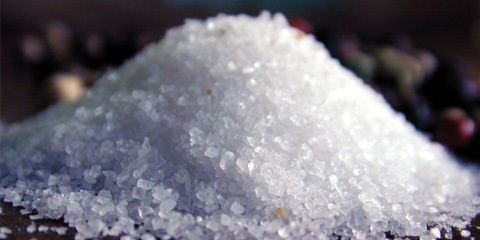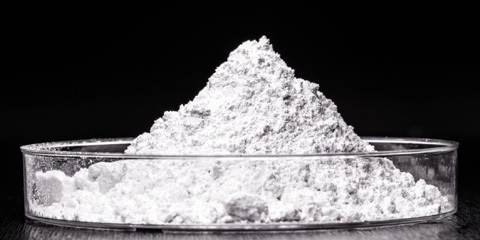Eight Application Fields and Research Progress of Calcium Sulfate Whisker
Release time:
2023-11-13
Calcium sulfate whisker is prepared from gypsum ore or industrial by-products. It is a kind of green environmental protection material with excellent performance, high cost performance and non-toxic. It can be applied to rubber, plastic, paper, asphalt and construction industries.

Calcium sulfate whisker is prepared from gypsum ore or industrial by-products. It is a kind of green environmental protection material with excellent performance, high cost performance and non-toxic. It can be applied to rubber, plastic, paper, asphalt and construction industries.

Calcium sulfate whiskers are generally used as additives, and calcium sulfate whiskers are widely used in rubber, plastics, catalysts and wear-resistant materials. Its usage is generally 5% ~ 15% of the base material. According to this proportion, the demand of paper industry is generally 25000t/year, and the demand of rubber and plastic industry is at least 40000t/year. With the development of inorganic non-metallic materials, it is applied in coating, cement, asphalt and pharmaceutical industry. The application prospect of calcium sulfate whisker is very promising.
1. Polymer composites
The application of calcium sulfate whisker in composite materials, because of its small particle size, high strength and good high temperature resistance, calcium sulfate whisker can play the role of skeleton in polymer materials. Zhang Jiuzhi studied the effect of calcium sulfate whisker on the mechanical properties of E-44 epoxy resin, and found that with the increase of calcium sulfate whisker content, the tensile and bending strength of the material increased, and when the calcium sulfate whisker content was 1.5wt%, the tensile and bending strength reached the maximum.
Due to the complex and expensive preparation methods of SiO2 aerogels, mass production and practical application are severely limited. Compared with other whisker materials, it is found that calcium sulfate whiskers have excellent mechanical properties and excellent physical and chemical properties, so calcium sulfate whiskers are used as reinforcing materials for clay aerogels. A renewable foam-like monolithic CSW/clay aerogel composite was successfully prepared by freeze-drying process with sodium montmorillonite as matrix, CSW as strong reinforcing agent and PVOH as binder. The experimental results show that the compression and thermal insulation properties of clay aerogels are improved by adding calcium sulfate whiskers.
2. Coating
Calcium sulfate whisker has good compatibility, smoothness and chemical stability, and its addition to the latex paint can make the paint smoother. Zhang Yi and others specially studied the application of calcium sulfate whiskers in latex paint, and explored the effect of different calcium sulfate whiskers on the performance of latex paint. The experimental results show that when the mass fraction of calcium sulfate whisker is 0.5%~ 2.5%, the wash resistance, contrast ratio and elasticity are significantly improved, and the latex paint becomes matte color without matte treatment again. The addition of calcium sulfate whisker will improve the adhesion of the paint film. When the addition amount is 0.5%, the adhesion level of the paint film is increased from 6 to 4. When the addition amount reaches 2.5%, the adhesion of the paint film is not improved again. The addition of calcium sulfate whisker has no effect on the water resistance, alkali resistance and low temperature stability of the latex paint, reduces the whiteness, and has a certain effect on the weather resistance.
3. Papermaking
Calcium sulfate whiskers can fully reduce costs by replacing natural plant fibers for papermaking, because calcium sulfate whiskers have certain advantages in whiteness, and their fibrous structure can make the strength of paper materials not reduced by adding materials. Calcium sulfate whiskers have strong adsorption, which can absorb most of the fillers in paper materials and reduce the use of materials. Wang Chenghai studied the addition of calcium sulfate whiskers to paper. The unmodified calcium sulfate whiskers reduced the gray content of the paper because of their high solubility. After adding the modified calcium sulfate whiskers, the strength and ash content of the paper were significantly improved.
4. Friction materials
Because of its non-toxic and good wear resistance, calcium sulfate whiskers can replace some toxic asbestos to increase the wear resistance, elasticity and stretch resistance of friction materials. The effect of calcium sulfate whisker addition on the friction properties of automotive brake friction materials (BFM) was studied by Sudhan Raj Jeganmohan et al. Due to the degradation of the organic polymer matrix on the surface of the friction pad during the braking process, the mechanical properties and friction properties of the friction material are reduced. The influence of temperature on the braking effect and the ability of the brake friction material to restore friction stability are evaluated The main basis of the material. It was found that the wear rate of the friction material added with 5% calcium sulfate whisker was smaller, and when the calcium sulfate whisker was added with 10%, it showed a more stable friction coefficient. The addition of calcium sulfate whiskers improved the friction performance and showed good friction recovery ability.
Lu Mingyu studied the effect of the composite material of magnesium borate and calcium sulfate whisker on the brake pads. The study found that the friction coefficient of the brake pads added with the composite material did not decrease and the wear rate did not increase when the temperature was 300~350 ℃.
5. Asphalt
Taotao Fan used anhydrous calcium sulfate whiskers and hemihydrate calcium sulfate whiskers to improve the performance of asphalt binder. The experimental results show that the addition of calcium sulfate whiskers improves the rolling resistance of asphalt binder, and the more calcium sulfate whiskers are added, the better the high temperature resistance and thermal stability of asphalt. The thermal stability of asphalt modified by anhydrous calcium sulfate whiskers is higher than that of hemihydrate calcium sulfate whiskers. The high temperature resistance of asphalt binder modified by hemihydrate calcium sulfate whisker is higher than that of asphalt binder modified by anhydrous calcium sulfate whisker. When the amount of anhydrous calcium sulfate whisker is 9%, it is a turning point. When it is lower than this value, the anti-rolling ability and high temperature resistance of asphalt are not as good as that of the matrix itself. On the contrary, when it is higher than 9%, asphalt has good anti-rolling ability and high temperature resistance.
6. Cement
WAN Lianjian used calcium sulfate whisker as a reinforcing material of cement to study the effect of calcium sulfate whisker on the mechanical properties of cement. Because the calcium sulfate whiskers do not react with the main components of cement. Calcium sulfate whisker itself has excellent mechanical properties, compatibility and appropriate interface bonding strength, which is conducive to better strengthening and toughening effect of cement. Since calcium sulfate whiskers are ultrafine fiber materials, the main mechanisms of addition to cement are load transfer, crack bridging, crack deflection and pull-out effect. The results show that the flexural strength and compressive strength of the mortar specimens are increased by 28.3 and 8.5, respectively, by incorporating 5wt% CaSO4 whiskers. In addition, the chemical composition and structural transformation of the CaSO4 whisker hardened cement matrix were identified by X-ray diffraction (XRD) and scanning electron microscopy (SEM). It can be concluded that CaSO4 whiskers can effectively prevent the formation of microcracks and limit their coalescence, the harmless pore rate in cement increases from 9.33 to 10.62, and the harmful pore rate decreases from 2.08 to 1.90. Therefore, whiskers can optimize the pore size distribution of cement.
7, ceramic tile
Zimo Sheng et al. used phosphate gypsum to prepare non-calcined ceramic tiles by hydrothermal synthesis, in which calcium sulfate whiskers were used as reinforcing agents to improve the mechanical strength of ceramic tiles. When the content of calcium sulfate whisker is 1%, the ceramic tile has high bending strength. Compared with the ceramic tile without calcium sulfate whisker, the bending strength is increased by about 80%. At the same time, the mechanical properties of the product can be improved and the hydration time can be reduced. The high-strength CSW can be firmly combined with gypsum crystals and act as a "bridge", thereby forming a tightly connected network throughout the tile.
8, Medical
Nano-scale calcium sulfate whiskers can be used in the repair of cancellous bone defects, because calcium sulfate whiskers have good compatibility and bone conductivity. Huang Qiang studied strontium (0.5%) mixed with calcium sulfate whiskers to fill bone defects. Strontium can increase bone activity for bone cells and accelerate the repair of defect areas.
Source: Niu Xiaochao, Wu Jinxiu, Liu Zhaogang, et al. Research Progress of Calcium Sulfate Whisker [J]. Applied Chemical Industry, 2022,51(04):1174-1180 1201, edited by [Powder Technology Network], reprinted please indicate the source!






